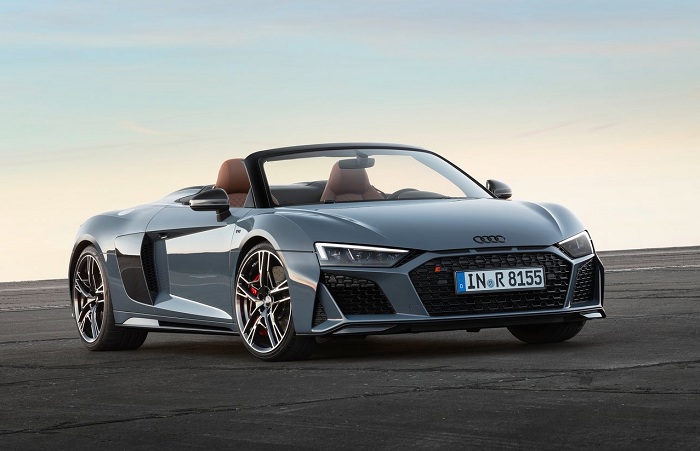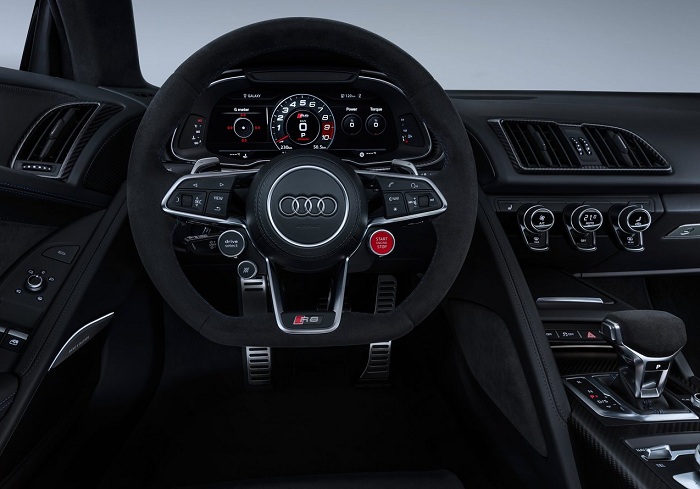Reportedly the model’s final refreshment with no successor planned once production ends in 2020, the updates to both the coupe and Spyder externally consists out of a flatter Singleframe grille, slits underneath the bonnet that first debuted on the new A1, an updated rear diffuser, wider front splitter and the option of a three-part engine cover finished in plastic or carbon fibre.
Also available with a choice of three exterior packages depending on the model, Audi has added two new colours in the form of Kemora Grey and Ascari Blue, while buyers can also specify the R8 with high gloss black detailing on the four rings logo, diffuser, side blades and splitter.
Riding as standard on 19-inch alloy wheels with ultra-lightweight machined 20-inch alloys optional, the changes inside are less dramatic and limited to a selection of new colours; Pastel Silver with Rock Grey stitching, Palomino Brown with Steel Grey detailing and Black with Utopia Blue stitching. Opt for the optional Performance Design Package available on flagship models only, the interior can be finished in leather and Alcantara upholstery with carbon fibre inserts and Mercato Blue accents.

Underneath its more aggressive skin, the R8 has been subtly updated with sharper steering for both the standard and optional electromechanical Dynamic Steering setups, while the Audi Drive Select mode dial now comes with three new settings; Dry, Wet and Snow for the top spec, newly named Performance model.
Rounding off the revisions are uprated brakes, with the standard issue steel units being painted black or red, and the optional carbon ceramic items, made from a combination of aluminium and carbon fibre-reinforced polymer (CFRP) that is claimed to save around two kilograms, in grey or red.
In spite of claims as far as back as March this year that the R8 will offer the Volkswagen Group’s 2.9-litre twin-turbocharged V6 engine as the new entry-level motor in place of the long since discontinued 4.2 FSI V8, a claim later denied by Audi, the R8 will continue with the existing normally aspirated 5.2 FSI V10, albeit revised further with more power.

Up 22kW/10Nm, the free-breathing bent-ten now produces 419kW/550Nm in “base” models, while in the Performance, output has been upped by seven kilowatts and 20Nm to 456kW/520Nm. Standard on all models is a seven-speed S tronic gearbox, with quattro all-wheel drive again the sole method of transmitting the amount of twist to the road now that the limited-run, rear-wheel drive R8 RWS is no more.
As for performance, Audi claims a top speed of 324km/h for the standard coupe and 322km/h for the Spyder, with the former getting from 0-100km/h in 3.4 seconds and the latter in 3.5 seconds. For the Performance, the top speed is rated at 331km/h for the coupe and 329km/h for the Spyder, while respective acceleration times are 3.1 and 3.2 seconds.
In its home market, sales of the R8 will kick-off during the first quarter of next year with other market following suite. This will likely include South Africa where the R8 could debut around mid-year or towards the end of 2019.

















